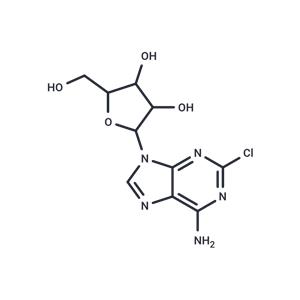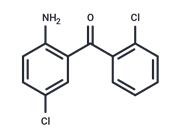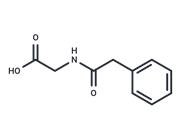| Name | 2-Chloroadenosine |
| Description | 2-Chloroadenosine (CADO) is a metabolically stable analog of adenosine that binds to adenosine A1, A2A, and A3 receptors( Ki:300, 80, and 1,900 nM, respectively) |
| In vivo | 2-Chloroadenosine(CADO) has been used to activate adenosine receptors in the thalamus, generating anticonvulsive activity in a rat model of generalized seizures.?It has also been used to induce bronchoconstrictor effects in a guinea pig model of asthma and to study cardiovascular responses in normotensive and hypertensive rats |
| Storage | Powder: -20°C for 3 years | In solvent: -80°C for 1 year | Shipping with blue ice/Shipping at ambient temperature. |
| Solubility Information | 10% DMSO+40% PEG300+5% Tween 80+45% Saline : 2 mg/mL (6.63 mM), Sonication is recommended.
DMSO : 45 mg/mL (149.16 mM), Sonication is recommended.
|
| Keywords | transported | permeant | loss | ischaemic | Inhibitor | inhibit | influx,nitrobenzylthioinosine | human | erythrocytes,uridine | cell | analogue | AdenosineReceptor | Adenosine receptor | Adenosine Receptor | 2-Chloroadenosine | 2Chloroadenosine | 2 Chloroadenosine |
| Inhibitors Related | Stavudine | Aceglutamide | Cysteamine hydrochloride | Urea | Sodium 4-phenylbutyrate | Metronidazole | Citric Acid Triammonium | Tributyrin | L-Methionine | Dimethyl phthalate | Alginic acid | Dextran sulfate sodium salt (MW 5000) |
| Related Compound Libraries | Target-Focused Phenotypic Screening Library | Bioactive Compound Library | Neuronal Signaling Compound Library | Membrane Protein-targeted Compound Library | Neurotransmitter Receptor Compound Library | Anti-Viral Compound Library | Inhibitor Library | Bioactive Compounds Library Max | GPCR Compound Library | Anti-COVID-19 Compound Library | Anti-Infection Compound Library | Human Metabolite Library |

 United States
United States






